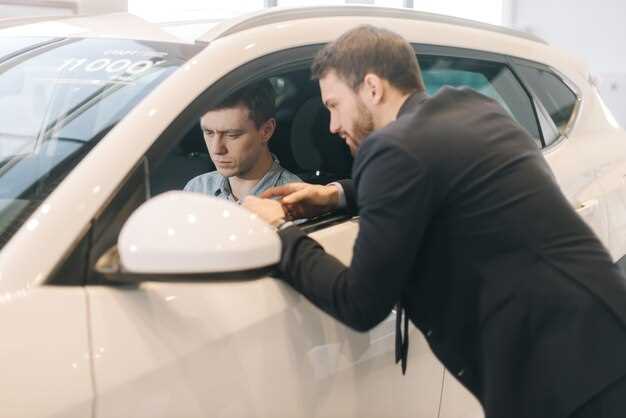
Testing rare vehicles can be an exhilarating experience, yet it comes with its own set of challenges. Ensuring a safe test drive requires careful planning and an understanding of the vehicle’s unique characteristics. This article provides essential tips for navigating the intricacies of driving rare automobiles while minimizing risks and maximizing enjoyment.
Before embarking on a test drive, it’s crucial to familiarize yourself with the specific performance traits of the vehicle in question. Rare vehicles often possess distinct handling capabilities and responsiveness, necessitating a cautious approach. Consider conducting a thorough pre-drive inspection and consulting with the vehicle’s owner or a knowledgeable expert to highlight any quirks or concerns that may arise during the test.
Moreover, selecting the right environment for your test drive can significantly enhance safety. Opt for quiet areas with minimal traffic and ample space to fully engage with the vehicle. By following these guidelines, you can ensure that your experience with a rare vehicle is both thrilling and secure, allowing you to appreciate the artistry behind these automotive masterpieces.
Safe Test Drives for Rare Vehicles: Tips and Guidelines

When preparing for a test drive of a rare vehicle, safety should always be the top priority. Here are essential tips to ensure a secure and enjoyable experience.
First, thoroughly inspect the vehicle before driving. Check for any visible damages, tire condition, and fluid levels. Ensuring that the vehicle is in good condition reduces the risk of mechanical failures during the drive.
Next, familiarize yourself with the vehicle’s specifications and controls. Understanding how the car operates, including features like braking systems, transmission, and handling characteristics, enhances your ability to drive safely.
Always drive in a safe and suitable environment. Choose test drive routes that are free from heavy traffic and distractions. This allows you to focus on the vehicle’s performance and handling without the added stress of congested roads.
During the test drive, adhere to all traffic regulations and speed limits. Rare vehicles may have unexpected power and handling capabilities, making it essential to respond appropriately to their performance.
Consider having a co-pilot during the test drive. A knowledgeable passenger can assist with navigation and provide insights about the vehicle, further improving safety and comfort.
Practice defensive driving techniques. Be aware of your surroundings and anticipate the actions of other drivers to avoid potential hazards on the road.
Finally, after completing the test drive, reflect on the experience. Assess how the vehicle felt when driving and whether it met your expectations. This evaluation is crucial for making informed decisions about rare vehicles.
Preparing for Your Test Drive of a Rare Vehicle

Before you embark on a test drive of a rare vehicle, thorough preparation is essential to ensure a safe and enjoyable experience. Here are some valuable tips to guide you through the process.
Research the Vehicle: Familiarize yourself with the specific model you are going to test. Understand its features, specifications, and any known issues. This will help you make informed decisions during the drive.
Inspect the Vehicle: Prior to your test drive, conduct a visual inspection of the vehicle. Look for signs of wear or damage both inside and outside. Pay special attention to any modifications that may affect performance.
Communicate with the Owner: Engage in a detailed conversation with the owner or dealer about the vehicle’s history, previous maintenance, and any special considerations you should be aware of while driving.
Plan Your Route: Choose a test drive route that includes various types of roads–such as highways, city streets, and winding roads–so you can fully assess the vehicle’s handling and performance. Make sure to avoid heavy traffic areas to concentrate on the experience.
Dress Appropriately: Wear comfortable clothing and shoes suitable for driving. This will enable you to focus on the vehicle instead of being distracted by discomfort.
Bring Essential Tools: Carry a notepad or mobile device to jot down your impressions and any concerns during the test. A checklist of items to assess, such as acceleration, braking, and steering response, can also be beneficial.
Focus on Driving: Keep your attention on the road and the vehicle’s behavior during the test drive. Avoid distractions like your phone, and engage fully with the driving experience.
Take Your Time: Don’t rush the test drive. Spend enough time with the vehicle to gather a comprehensive understanding of its performance and how it feels to drive. Test various functions, including the brakes, steering, and acceleration.
By following these tips, you will be well-prepared for your test drive of a rare vehicle, allowing you to make a confident decision regarding your potential purchase.
Assessing Vehicle Condition and Features During the Drive
When test driving a rare vehicle, carefully assessing its condition and features is crucial to ensure that it meets your expectations and is worthy of your investment. Here are some essential tips to follow while evaluating the vehicle during the drive:
- Initial Impression: Pay attention to how the vehicle starts and idles. Listen for unusual noises that may indicate underlying issues.
- Braking Performance: Test the brakes at various speeds. Ensure they respond quickly without any vibrations or pulling to one side.
- Acceleration and Power: Assess the vehicle’s acceleration. It should be smooth without hesitations or stalling.
- Steering and Handling: Evaluate the steering responsiveness. The vehicle should handle corners well and track straight without drifting.
- Suspension and Ride Quality: Notice how the suspension absorbs bumps. A well-maintained suspension should provide a comfortable ride without excessive bouncing.
- Gauges and Electronics: Check the dashboard indicators and display electronics. Ensure that all gauges function correctly during the drive.
In addition to the driving experience, assess the vehicle’s features:
- Technology: Test all technological features, including the infotainment system, navigation, and connectivity options.
- Comfort Features: Adjust seats, climate control, and other comfort features to ensure they work as intended.
- Storage and Space: Evaluate trunk space and interior storage options to confirm they meet your requirements.
After the drive, take notes on your observations to compare with other vehicles you may be considering. This meticulous assessment will help you make an informed decision about your potential purchase.
Post-Drive Evaluation and Follow-up Safety Checks
After completing a test drive of a rare vehicle, it is essential to conduct a comprehensive post-drive evaluation. This process not only ensures the vehicle’s performance but also emphasizes safety for future use. Begin by taking notes on the vehicle’s handling, braking response, and any unusual noises encountered during the drive. Documenting these observations will help in identifying potential safety concerns that need addressing.
Next, perform a thorough visual inspection of the vehicle. Check for any signs of fluid leaks under the vehicle, particularly oil, coolant, and brake fluid. These leaks are often indicators of underlying mechanical issues that could affect safety. Additionally, examine tire conditions, including tread depth and pressure, as proper tire maintenance is crucial for safe driving.
Following the visual inspection, revisit the dashboard indicators. Ensure that all warning lights are functioning correctly and that there are no alerts indicating a system malfunction. A lit warning light could signify a critical safety issue requiring immediate attention.
Finally, conduct a follow-up safety check by reviewing the vehicle’s maintenance history. Confirm that all scheduled services have been completed, including brake inspections, fluid changes, and any necessary repairs. Consulting with a qualified mechanic, especially one experienced in rare vehicles, can provide deeper insights into the vehicle’s safety and functionality.
By systematically addressing these aspects after a test drive, you can significantly enhance both the safety and enjoyment of driving rare vehicles, ensuring that they remain in optimal condition for future outings.


